Where Have All the Trek Sites Gone?
Trek fandom in the age of Web 2.0
 As the owner of a major Star Trek website it is part of my "job" and a genuine interest to keep an eye on the development of the online Trek fandom. But the number of notable fan websites that I loved to visit keeps shrinking over the past couple of years. I know from discussions at the Subspace Comms Network that I am not alone with this worrying observation. Many sites that used to be formidable resources and ought to have been kept alive by all means have vanished without a trace. To name only a few, Maximum Defiant is lost just as Star Trek in Sound and Vision, The Ultimate Star Trek Collection, Star Trek Australia, TrekEnterprise.com or Trek5.com. Others have not been updated in years and may disappear as soon as their domains or hosting contracts expire.
As the owner of a major Star Trek website it is part of my "job" and a genuine interest to keep an eye on the development of the online Trek fandom. But the number of notable fan websites that I loved to visit keeps shrinking over the past couple of years. I know from discussions at the Subspace Comms Network that I am not alone with this worrying observation. Many sites that used to be formidable resources and ought to have been kept alive by all means have vanished without a trace. To name only a few, Maximum Defiant is lost just as Star Trek in Sound and Vision, The Ultimate Star Trek Collection, Star Trek Australia, TrekEnterprise.com or Trek5.com. Others have not been updated in years and may disappear as soon as their domains or hosting contracts expire.
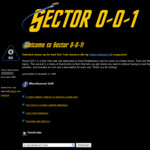 |
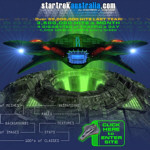 |
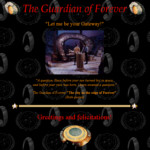 |
 |
 |
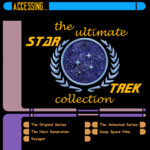 |
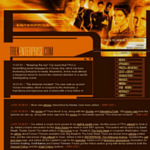 |
 |
 |
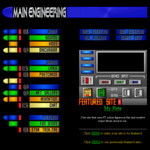 |
 |
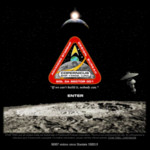 |
Ironically the free websites hosted at Geocities or Tripod with all their technical limitations may survive much longer, even if they have not been taken care of in years. Yet, many of these sites have become places to avoid because of the overkill of banners and other ads forced upon them, as well as because of countless dead image links. While old sites kept vanishing or were becoming hopelessly outdated, hardly any ones were launched in the past few years. At least there are almost no decent new sites that would have lasted more than a couple of months until they ceased being updated.
Update In 2009 Geocities shut down sites that were still being hosted for free, and hence many of the oldest Trek sites, albeit few big or otherwise notable ones.
Online Fandom and the Demise of Trek
The perhaps most obvious reason for the shrinkage of the online Trek fandom, at latest since May 2005, is the cancellation of Star Trek Enterprise. We must bear in mind that during the complete lifetime of the WWW until 2005 continually at least one fresh Trek series has been on air. Without new episodes that would stir up interest in Trek websites especially many Enterprise-themed sites went offline, such as Ult-Enterprise or e:earth. Actually, except for Starfleetcom.net which, no surprise, was last updated in 2005, there is not a single notable place devoted particularly to Star Trek Enterprise as of 2007. This is very sad regardless of the somewhat controversial reception of the latest series.
Furthermore, sites posting Trek news like TrekToday or Trekweb seem to have lost many visitors from 2005 to 2006. They both dropped a few positions at Alexa and now (as of July 23, 2007) rank behind Ex Astris Scientia (EAS). This is no surprise either. Frankly speaking, without the prospect of genuine Trek news, few fans are so much interested in the endeavors and random statements of former Trek actors that they would visit Trek news sites every day, but at most once every week. Fortunately, Trekweb as well as TrekToday are maintained by dedicated staffs and are backed by strong communities that may help bridge the Trek-less time. But even general sites that do not depend very much on recent developments, just like EAS, experience a significant decrease of their visitor counts. From May 2005 to May 2006 the number of visitors to EAS dropped by about 20%. The Daystrom Institute Technical Library (DITL), with its similar theme, suffered an almost congruent negative development. The trend has been reversed in recent months and the figures of 2007 are steady on the level of 2005 again. This is probably because of the announcement of the new movie to come to the theaters and, to lesser degree, because of the ongoing release of remastered TOS episodes. The Trek Movie Report, one of the very few new noteworthy sites that were created in the course of the past years and probably the only one with lasting success, could profit from this development as it focused its coverage on these items of special interest. Maybe "Star Trek XI" gives other fan websites that are still being updated a boost too.
However, overall there does not seem to be a bright future for "classic" Trek websites. And with the prospect of claiming a share in a shrinking fandom, there is naturally little motivation for Trek fans to keep their sites up-to-date, let alone to create new ones.
Online Fandom in Retrospect
Many Star Trek sites appeared in the wake of the announcement or the launch of a new series, and many disappeared soon after the end of that series, even after years of frequent updates. But general internet trends always played a role just as well in the decision if and what kind of websites the fans created.
Looking back at the beginning, after the primordial era of Usenet and newsgroups, it was the personal websites that paved the way for the Trek fandom into the internet in the first half of the 1990s. It seems that Star Trek was among the most popular topics of the early internet because computer geeks, the only people with modem access in those days, very often used to be Trek fans as well. 1994 was the birth year of Star Trek WWW by Luca Sambucci, which is still occasionally referred to as the "Mother of all Star Trek Sites" today, though the site stopped updating as soon as in January 1998. It never consisted of much more than a link list, yet Star Trek WWW with its groundbreaking LCARS-like layout used to be the hub of Trek-related internet activities for the barely four years of its useful existence. We need to keep in mind that there was no Google yet and that older search engines like Altavista were still in a developmental phase when Star Trek WWW already had most Trek sites at the surfer's fingertips. Other fan websites made well before the turn of the century constituted first efforts to collect pictures and data on Star Trek, or they were geeky places like Jason Hinson's Physics and Star Trek with its simplistic "university-style" layout on the sub-pages still today.
The real boom, with always more complex Trek websites popping up every few days, lasted from 1996 to 2001. It was made possible by the large-scale connection of universities and some time later of companies and home offices to the internet. Powerful WYSIWYG (What You See Is What You Get) editors allowed the creation of relatively clean HTML code (for which a strict standard was not yet implemented and was not desired by browser and software manufacturers). For the first time there was no need to check the HTML in the text editor too often. This was an indispensable prerequisite to create websites that consisted of more than just a few pages and that included a navigation structure. While domain name hosting was not yet affordable, university or company servers were often "misused" to host personal websites. Also, free hosts such as notably Geocities were still considered a good option despite the already beginning pollution of otherwise well-designed websites with increasingly annoying banners or pop-ups. Many major Trek websites were born in this era. Almost of them have either vanished completely, such as Pedro's Shiporama or Medical Log: Supplemental; or they stopped updating, such as Star Trek Dimension (which is being preserved by EAS) or LCARScom.net. Few places like Daystrom Institute Technical Library or EAS are still alive and thriving.
We can categorize the conventional fan websites as follows:
- Personal site with photos, fan art, fan fiction, random thoughts, a bit of everything
- Database- or gallery-type site, neatly arranged and ambitious but usually limited to a few subjects
- Themed site about a specific show, race, actress, ship class, etc.
- Any combination of the above
Besides these typical personal sites there used to be review sites, news sites and RPGs (mostly PbeM, Play by e-Mail, at that time).
In more recent years the focus of activity gradually shifted to interactive communities and to collaborative projects. Initially, while the web community was overall rapidly growing anyway around 1998, the newly created message boards drew away all the traffic from the newsgroups, rather than from websites. But a couple of years later groups of any kind became more attractive places than personal sites. Star Trek is on the same way as the entire internet. The way towards Web 2.0.
Demographic and Technical Obstacles for Webmasters
The decreasing public interest in the topic of Star Trek is clearly an important factor that the online fandom currently has to cope with. But while the existing fan communities are apparently doing fine despite the overall shrinkage, there are technical and demographic developments that are responsible for the particular demise of the conventional personal websites. Reasons that may apply to fan sites of other TV and entertainment franchises likewise.
One reason for fans to favor groups over individual sites is that people who would formerly either just look around or create something themselves discovered that they could combine both by working together - which is a very good thing. This trend led to the creation of many forums such as TrekBBS as the biggest one to exist today, to Saveenterprise.com and Trek United that gave the fans an influential voice, to various fan fiction and fan art projects and to the ultimate group project, Memory Alpha (MA). Not only by the amount of content but also by its very nature MA has superseded anything privately owned, including EAS. Naturally (and this sounds like a certain Spock quote), the collaborative work of many fans is deemed more relevant and more important than the work of individuals. While it let the interest in existing database sites fade away, MA certainly also deterred fans from launching their own sites in the first place. MA has made it blindingly obvious that single individuals, with their personal sites, can never keep up with the development of the wikis and other communities. At EAS I try to shift the focus away from anything that would need a regular structure (i.e. database-like stuff), a field in which I can compete with MA neither technically nor with my limited time of perhaps two hours per day.
The second reason is the ongoing specialization and diversification of the fandom. Especially with many (young) fans being new to the WWW, who are more into games than into technical discussions, who are interested in 3D modeling with only a passing interest in Star Trek or who prefer one show over another, there are special places for each and every particular topic. There are special-interest message boards to find like-minded people (or opponents to debate with). While this development will not necessarily lead to a schism or broaden an existing one (VOY vs. DS9 debates date back as far as to the late newsgroup era), it removes the necessity to care about Star Trek as a whole, as it used to be the approach of most old fan websites.
The third reason is that initially it was just the computer and/or Star Trek geeks who would look around in the web, but gradually people went online who were at most casual fans and who are naturally not the target audience of "nerdy" personal websites. Ultimately the YouTube generation has arrived, who only seem to be interested in easy to digest fun stuff. In the Web 2.0 Star Trek mainly takes place in the form of small bits, as random video posts at YouTube, as random links that are shown in bookmaking communities or as random entries in blogs. One particularly bad development that not only ignores but even harms personal sites is that people look up images at Google Images and hotlink them on message boards, preferably inline. As I can see in my server referrer logs as well as in posts in various online communities, a majority of people outside the geeky Trek-specific places just want eye-candy or other fun stuff and don't mind the actual content that Star Trek websites have to offer.
It should be annotated that still rather few Trek sites are arranged as blogs. At least, hardly any noteworthy sites have chosen this format. I am fond of a few blogs like Seb's Raw Takes or Star Trek Ruminations. Even Trek Movie Report is a blog, strictly speaking. Blogs are the perfect platform in the spirit of the information bits of Web 2.0. They can be updated easily, with feed creation, archiving and everything. However, blogs will not be able to replace a personal website. The latter requires the webmaster to conceive a design and structure that is custom-tailored for the topic and the content. It needs a lot more personal dedication to create and maintain a real website, and it shows in the result.
But looking more critically at the design and content, I noticed something. Many Trek websites of the 1990s and early 2000s used to have a pretty layout and lots of well-arranged stuff at the time of their creation. But this is only true for some long-lived top-notch sites. If we are honest, many, if not most personal websites stopped updating after a couple of months, even while new episodes were still being aired. Some sites didn't even survive beyond their initial upload. Particularly those with overblown layout that may have obstructed the addition of new content. Most RPGs and other projects were never really launched, speaking from the obvious lack of announcements in their update logs. Perhaps, while some sadly missed "premium" websites were great and would be still worth a visit today, I think we tend to overrate the historical merits of Trek sites. Actually, I would go as far as saying that, even if we leave technical and design considerations aside for a moment, none of the early Trek websites could remotely compete with the present standard on fan sites. Maintaining a place like Star Trek WWW today, with an accordingly updated layout and new code and tools, would be effortless, not comparable to the massive amount of heavily intertwined content of EAS, TrekToday or even of Memory Alpha.
The possibilities of web design have been greatly expanded in recent years, and creating a web design has become accordingly more complex. In the 1990s, the already mentioned WYSIWYG editors such as Frontpage or HoTMetaL enabled the generation of comparably sophisticated site structures with graphical layout in HTML. But that was before the large-scale implementation of the HTML 4.0 standard with CSS (Cascaded Style Sheets) in browsers as well as in HTML editors happened. Old sites that were designed in the age of the "browser wars" are incompatible with the new standard, even though recent browsers (as of 2007) like Internet Explorer 7 or Firefox 2 still display them correctly. Most prominently the now deprecated <font> tag as it can be found in large numbers on any pre-CSS HTML page is an obstacle to further developing many sites. There is no automated software that would be capable of editing them out dependably. As much as I would love to convert everything to CSS at EAS, I have to postpone this huge pile of manual work indefinitely (because I would need to work around the clock for many weeks), or I have to come up with a very sophisticated conversion script myself (which would take many weeks likewise).
There are much better options today to create a really beautiful site design and, with external style sheets, to completely change it without touching the essence. Unfortunately this is only possible if 1) your content is already accordingly organized and 2) if you have a lot more artistic talent than was expected from a webmaster ten years ago. Also, you have to 3) familiarize yourself with CSS, which is incredibly more complex than the former HTML quasi-standard, unless you're using predefined templates for everything. In addition, you may need to know about databases, PHP, servers, etc. And write RSS feeds. It is nearly a bottomless pit if you want to stay or become a semi-professional. From my experience I can say that at some time a webmaster inevitably grows tired of always trying to catch up with the ever growing number of ever more complex standards - in addition to extending and updating the content all the time! You can't have both. I have essentially decided in favor of the content, and I need to put up with ever dropping ratings for my site design and frequent complaints about the complicated navigation at EAS. Even many blogs look better than my site, but making blogs with templates is very simple, as is adding casual content to them. I do not want to put it down because I know many bloggers are intelligent and creative people. Still, as already mentioned, appending blog entries is child's play compared to maintaining a fully-fledged website.
In light of all of these challenges, a personal website could easily provide enough work for a full-time job. But my available two hours per day must suffice for everything that needs to be done. Graham Kennedy of DITL and I may be the last two dinosaurs who manage huge Trek sites all alone.
Outlook
Summarizing, it is obvious that communities and group projects rule in our time. Memory Alpha and the various forums have all the technical advantages and the required manpower. Visiting traditional websites has become largely expendable due to the sheer wealth of information and entertainment that communities are able to offer. Creating new personal websites has become little rewarding, also because Star Trek's future is uncertain. Still, if we are fair, even without new personal sites there is more Trek available in the internet today than ever before and, thanks to Memory Alpha, more in-depth information than fans would have dreamed of ten years ago.
The so-called Web 2.0 in the form of the various image, video and bookmark communities takes Trek to the other extreme. Strictly speaking, casual posts with Trek-related links do not even belong to the Trek fandom. I find it annoying that some people go to Trek websites just to steal images, without reading a single word. Other visitors only seem to visit sites like EAS to reaffirm their prejudices about "nerds in their mom's basement" and spread them in their pathetic blogs or forums. As skeptical I am about the blog concept as a way to get across useful content, it may be good if some more real Trek fans enter the blogosphere.
Update Actually, as of 2010 there are a large number of new Trek websites, and several really good ones, that are organized as blogs.
Yet, I hope to see some new fully-fledged Trek websites. There are still many niches left, a few of which I have occupied with EAS. And I wonder why not more fans take on sites, let's say about alien cultures, actors or fan art. Places that could provide thorough and in-depth information that go beyond a few trivial facts and beyond the mere data at Memory Alpha. Fans should try to bring in their own creativity again - because a user's creativity is limited at MA, in blogs and on message boards, and it is completely suppressed at del.icio.us or StumbleUpon. Bring back the classic Trek sites and tell the world about the Romulans, what you know of them (canonically), what you think of them, and how you imagine their world. Invite others to contribute and comment. And present everything in a nice original website layout. If it was possible with the crude tools in 1997, why should it be a problem today?
Credits
Thanks to Nick Ottens, who brought up this issue!

Fandom @ Forgotten Trek

Back to Technical Support index














